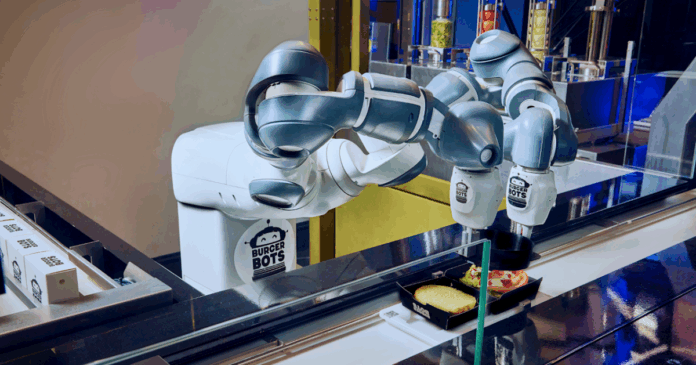Introduction to Robot-Run Restaurants
The future of the fast-food industry has arrived, and it’s being run by robots. In Los Gatos, California, a new restaurant called BurgerBots has opened its doors, featuring a team of robots that can assemble burgers in just 27 seconds. The robots, designed by ABB Robotics, are capable of making perfectly consistent burgers every time, with no attitude or complaints.
How it Works
The robots at BurgerBots are responsible for handling the burger production operation, from grinding the meat to assembling the ingredients and kicking out a complete, ready-to-eat burger. They use a combination of two robots, the IRB 360 FlexPicker and the YuMi cobot, to stack veggies and assemble the burgers. The system uses real-time inventory tracking to ensure that every burger is made to order.
The Role of Humans
While the robots are taking over the repetitive tasks, humans are still employed at the restaurant to handle the people-oriented tasks, such as hospitality and customer service. In fact, a full staff of humans is employed at BurgerBots, and the robots are designed to work alongside them to create a more efficient and enjoyable dining experience. According to Marc Segura, President of ABB Robotics Division, "The food service industry is dynamic and demanding, and our technology brings industrial-grade consistency, efficiency and reliability to this space."
Benefits of Automation
A survey conducted by ABB found that 67% of hospitality workers want robots to take over boring, gross, and dangerous tasks, and 63% were excited by the prospect of a robot making their job easier. Automation is not about replacing humans, but about upgrading the entire system. Just like the washing machine replaced the washboard, robots are designed to make our lives easier and more efficient.
Scalability and Efficiency
BurgerBots is designed for scalability, hygiene, and efficiency. The compact robot cell combines the FlexPicker 360 and the YuMi robot for final assembly, using a conveyor belt system to move the burgers along. The system is capable of tracking inventory in real-time, from lettuce to condiments, to ensure that every burger is made to order.
The Future of Automation
According to the World Economic Forum, automation and AI could lead to the loss of roughly 92 million human jobs by 2030. However, this does not mean that humans will be replaced entirely. Rather, robots will take over repetitive, tedious, and dangerous tasks, freeing up humans to focus on more creative and people-oriented tasks. As the founder of BurgerBots says, the company is still accepting resumes from qualified humans – just not for the burger-making position.
Conclusion
The introduction of robots in the fast-food industry is not a replacement for humans, but an upgrade to the entire system. By taking over repetitive tasks, robots can free up humans to focus on more creative and people-oriented tasks, creating a more efficient and enjoyable dining experience. As technology continues to advance, we can expect to see more robot-run restaurants like BurgerBots, where humans and robots work together to create a better future for all.

